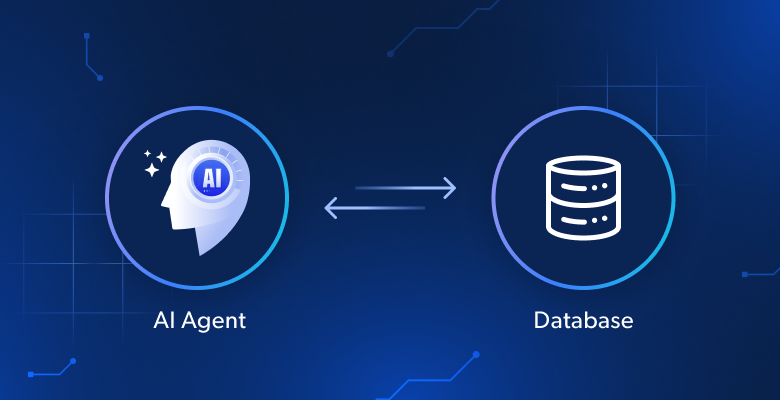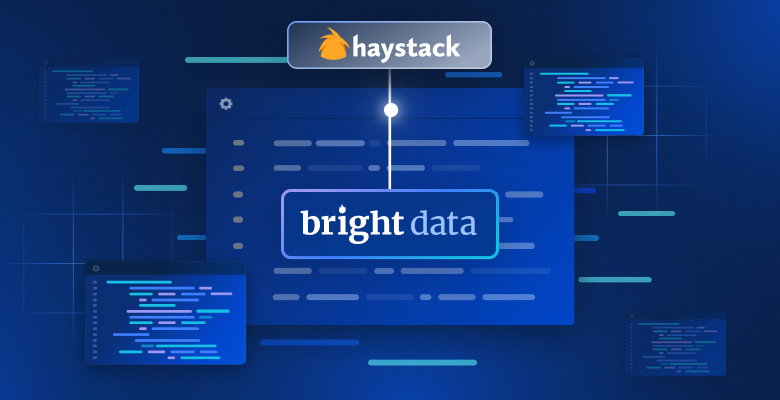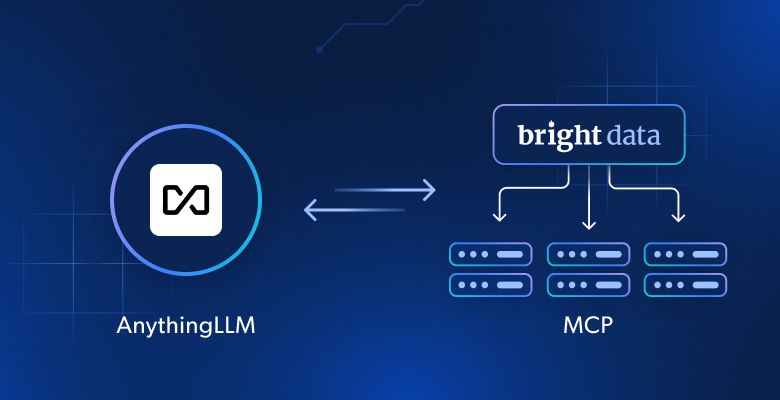MCP (Model Context Protocol) and A2A (Agent-to-Agent) are quickly reshaping our traditional assumptions on software architecture. Whether you’re leading strategy or building solutions, we’ll explain them clearly to avoid common mistakes made when integrating emerging technologies.
By the end of this piece, you’ll understand:
- What MCP is, and why to use it
- What A2A is, and where it fits into your stack
- When to use each protocol
- Why you’ll likely use both in the future
What Are MCP and A2A—And Why Should You Care?
We’re at the forefront of one of the biggest paradigm shifts in modern history. Artificial intelligence is actually being used on a day-to-day basis by almost everybody in one context or another. In workflows and architecture, a model used for accomplishing a task is called an “agent”.
At the heart of most of your current usage is Model Context Protocol (MCP). Agent-to-Agent (A2A) really is more of an emerging set of features than a clearly defined protocol.
- MCP: This is used to manage both context and the internal state of the model. You probably interact with MCP every day. Models like Grok, ChatGPT, and CoPilot all use MCP to manage context and tasks for general purposes. When creating your own agent, you’ll likely write a custom MCP.
- A2A: When two or more models speak to each other, this is an Agent-to-Agent process. Each agent still follows its own MCP. Their communication process is called A2A. You can think of it like spoken and written language between humans.
Model Context Protocol—The Brain

You can think of MCP almost like the “brain” of the machine. MCP encompasses all of the internal processes of a task—from language interpretation to task completion.
On X, you can find an endless stream of posts in which users reply “@grok”, followed by a question or statement. Grok then interprets the user’s prompt, and replies with a post relevant to the thread. This is textbook MCP filling a real use case in the wild.
1. Query Routing
Our first step involves “Query Routing”. When you say, “@grok, can you fact-check this post?”, Grok will perform a search and read relevant text. If you say, “@grok, please describe this post as an image.”, Grok will route the request to a different Aurora. You can read more on Aurora here.
- You make the initial query.
- The agent interprets the query and chooses a model to handle the query.
2. Tool Picking
Once the task has been passed to a specific AI model, the model selects tools to complete the given task. If you needed to hang a shelf, you’ll probably grab a hammer and nails, or a drill and screws—this is exactly what the model is doing.
These tools could be a search engine, a calculator, Python interpreter—literally anything. If Grok was asked to fact check, it would likely choose two tools.
- Search Engine: The model performs a search and evaluates “trusted” results. I’m not endorsing Grok’s trusted results here, they’re only being used for context.
- Calculator: If the post seems to overexaggerate or underexaggerate, perhaps COVID statistics, Grok should use a calculator to add numbers from both the search and the user’s post.
3. Server Handoff
Once the model has structured the task and chosen its tools, it needs to hand off the task. First, it tells the search engine which query to perform. Once it has the numbers, it sends a series of calculations to a calculator.
The term “server” here is used loosely. Depending on your model and setup, this “server”, could be something running inside a datacenter, or it could even be running at http://localhost:6000—or any other port for that matter. The point is simple: the tools listen for jobs, and the model sends those jobs to the tools.
- Tools Listen on Ports: The model hands the job to the correct tool “server”. It makes an HTTP Request to the server and awaits a response. Basically, Grok sends “1+1=?” to the server.
- Server Sends a Response: The server then responds with the completed job data. The server might say “1+1=2”. Grok can now take the answer and use it in the correct context.
4. Checkpoints (Optionally Human Ones)
Before sending the response back to the agent for output, the model’s output needs to be checked. You might not realize it, but bias and bad outputs still exist in models today. To prevent an incorrect answer like “1+1=3” or “1+1=ragebait”, the output goes through one or more checkpoints.
Depending on the context of the task, these checkpoints might be human, or they could be a model running the same job. The point here is simple: don’t let bad output make it to the user.
- The Checkpoint: Either a human, or a model double-checks the output from the task. This prevents dumb and embarrassing outputs from making it to the user.
- Correction: If the output is in fact bad, the agent needs to retry the job—it might use the same model, or it might pass the job to a different one.
- The Actual Output: Once the output has been checked, Grok posts it in a reply to the person who used “@grok”.
Agent-to-Agent Protocol—Communication Between Brains

If MCP is the overall brain function of the agent, A2A is how multiple brains talk to one another. In a real life context, multiple agents already talk to each other. Imagine you’re in a conversation with ChatGPT.
You and ChatGPT are talking about cats. It’s a long-form conversation and it goes all over the place. Small cats, big cats, intelligent cats… Then, you decide to tell ChatGPT about your cat. You want a ridiculous picture of your cat seeking world domination (because all cats want this deep down).
ChatGPT itself can’t create the image. ChatGPT farms this out to DALL-E much like Grok would use Aurora. The agent running ChatGPT will be speaking with the agent running DALL-E to accomplish the task.
Agent Card: The README for Your Agent
Agent cards are used to show others what your AI agent can do. This should show people how to connect to it and what types of output to expect from it. You don’t need to get deep into the weeds here. You’re not walking users through your code, you’re explaining with ultra-basic usage examples and their expected output. If you’ve ever read API documentation, you’ll know what’s appropriate here and what isn’t.
- Connection: Show exactly how to securely connect to the agent. If you’re demonstrating a REST API, use HTTPS examples with the real domain—not naked HTTP on a local host. If your agent is managed via SDK, show how to connect using the SDK.
- Simple Usage: For REST APIs, this is pretty standard—endpoints and output. If using an SDK, show the basic classes and methods involved.
- Example Output: Below each usage snippet, you should show another snippet with example output.
When writing an A2A application, you’ll be using the agent card to connect multiple agents together. When creating your own agents, others will use them via the agent card.
Treat people the way that you want to be treated.
Task System: How Tasks Are Created and Accomplished
Your task system is basically just a simple CRUD (Create, Read, Update, Delete) app. A user should be able to create a task. They should be able to read its status. Both the user and the agent need to update the task. In this case, delete is more of a best practices method—if you create a todo app that never stops growing, it’s wasteful.
- Create: Users (other agents in this case) should be able to create a new task. ChatGPT’s agent tells DALL-E that we need an evil cat determined to rule the world.
- Read: Users (or other agents) need to be able to check the status of a task. When ChatGPT says “Creating Image”, the status is “in progress”. Agents should always be able to read and transmit the status of a given task.
- Update: You forgot to tell ChatGPT that you wanted a bowtie on your cat. You should be able to update the prompt to get a better picture. Additionally, DALL-E should update the status of the task while ChatGPT waits for it.
- Delete: Companies are ignoring this basic feature more and more—focusing more on data lakes than efficiency. Your agent should be able to delete a task—hanging on to cancelled tasks is not only pointless, but it wastes storage for no reason.
Secure Messaging
Messages between agents need to be secure. Let’s take a step back into general computer science and think about SSL and HTTPS connections. When you send a request via HTTPS/SSL, the body of the request is encrypted. Only the server can read it. When the server sends its response, it is encrypted so that only your browser can read it.
Agents should follow this same principle. When dealing with multiple AI agents (likely to replace a fully human task), sensitive information sometimes might be involved. These agents should use an encryption protocol as well.
- Encryption: When agents communicate, it should be end-to-end encrypted. Anyone who intercepts the message should only be able to see jumbled garbage.
- Authentication: With proper authentication techniques, like digital signatures, agents can know who they’re talking to. When tied to a specific fingerprint, task information is limited to those with proper access.
Long-Running Support for Long Jobs
Some tasks don’t complete immediately. Sometimes they take hours—even days! When this happens, your agent needs to be communicative. Especially when a job involves multiple agents, the user should receive status updates from the agents.
- Real-Time Updates: Your agents should update their status in real-time. This allows the user to check status at their own convenience.
- Notifications and Email: Your agents also should send status updates incrementally. When a task completes, issue an email or a push notification.
Your agents should keep users in the loop without spamming them. Your users are using your A2A for convenience—make long-running tasks as convenient as possible.
Multimodal Communication
Often, when A2A processes deal with multimodal tasks. Think back to the ChatGPT and DALL-E example. ChatGPT handles the actual text chat, while DALL-E handles image creation.
- Free Text and Logic: Often handled by an LLM specializing in Natural Language Processing.
- Image and Video Generation: These tasks are handled by other specialized models, like DALL-E and Sora.
Tasks often require multimodal data formats. When dealing with these multimodal tasks, your A2A protocol should divide these tasks between appropriate models.
When Should You Use Each Protocol?
Each of these protocols is built to handle different scenarios. MCP handles an agent’s internals—its brain. A2A is used to make multiple agents communicate with one another.
| When to Use | MCP | A2A | Scope | Communication Style | Best For | Primary Concern | Example |
|---|---|---|---|---|---|---|---|
| Prevent Errors and Early Misalignment | ✔️ | ❌ | Single Agent | Internal | Task safety & validation | Avoiding premature action | ChatGPT verifying a prompt |
| Controlling a Single Agent’s Context | ✔️ | ❌ | Single Agent | Internal | Context-aware decisions | Memory + tool selection | CoPilot writing code |
| Cross-Agent Communication or Task Handoffs | ❌ | ✔️ | Multi-Agent | External | Workflow delegation | Agent interoperability | GPT handing off to DALL·E |
| Third-Party Agent Collaboration | ❌ | ✔️ | Multi-Agent | External | Vendor-to-vendor task orchestration | Protocol standardization | Alexa Skills integrating |
| Building a Multi-Agent Ecosystem | ❌ | ✔️ | Multi-Agent | External | Distributed agent systems | Task routing + discovery | Internal LLM pipeline |
| Maintaining Full Audit Trails (Single Agent) | ✔️ | ❌ | Single Agent | Internal | Logging and traceability | Observability | Finance automation agent |
| Flexibility Across Modalities (Text, Image, Video) | ❌ | ✔️ | Multi-Agent | External | Multimodal processing | Task segmentation | GPT + DALL·E or Sora |
Conclusion: In The Future, You’ll Use Them Both
MCP and A2A aren’t competing standards, they’re complementary systems. MCP is the sum of an agent’s internal processes. A2A dictates the communication between agents.
- MCP allows your agent to behave intelligently.
- A2A lets intelligent agents talk to each other.
If you’re training your own AI models, Bright Data offers custom datasets with historical data so your agent can spot trends. Need real-time data? Take a look at the Scraper API—get your data whenever your agent needs. so your agent is always prepared. With Agent Browser, your agents can browse the web just like a human—with proxy integration and CAPTCHA solving.







